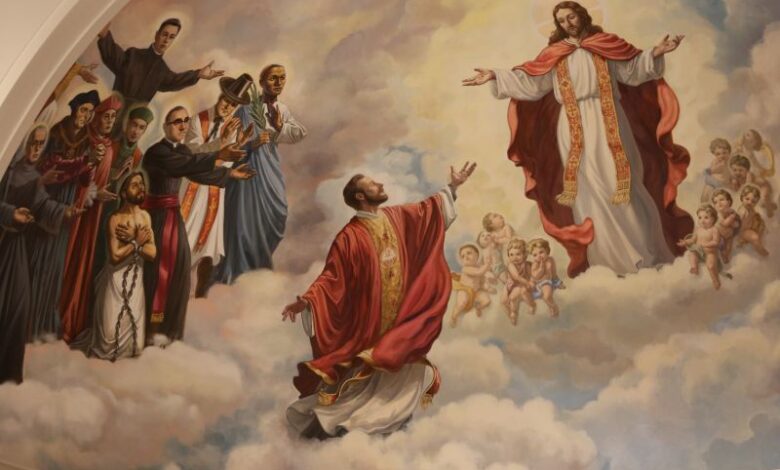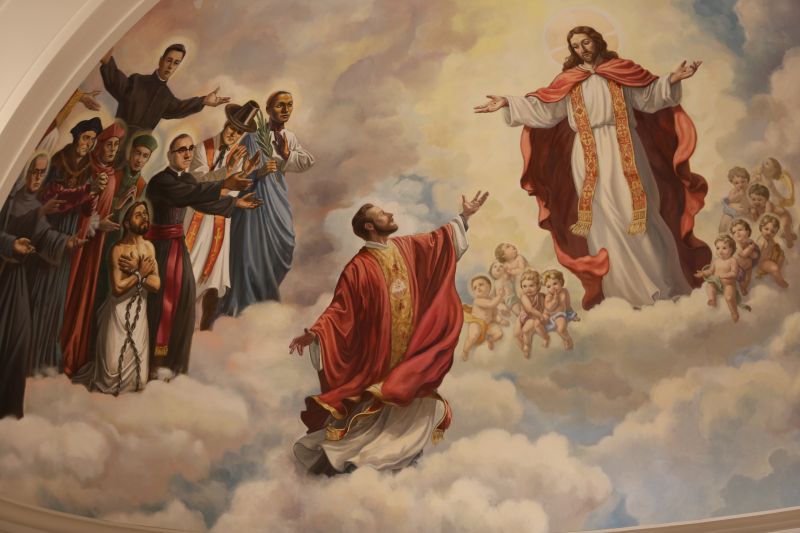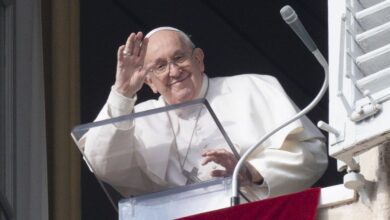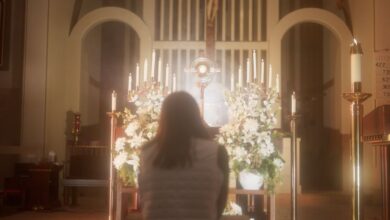What is the process for canonization? A guide for All Saints’ Day

 Detail of a mural showing Blessed Stanley Rother being welcomed into heaven at the new Blessed Stanley Rother Shrine in Oklahoma City. / Credit: Joe Holdren/EWTN News
Detail of a mural showing Blessed Stanley Rother being welcomed into heaven at the new Blessed Stanley Rother Shrine in Oklahoma City. / Credit: Joe Holdren/EWTN News CNA Staff, Nov 1, 2023 / 04:00 am (CNA).
Nov. 1 is the solemnity of All Saints — known more popularly as All Saints’ Day — the day on which the Catholic Church celebrates all who have attained eternal life with God in heaven.
The Catholic Church formally recognizes thousands and thousands of saints. But how exactly does the Church come to declare someone a saint in heaven? Unsurprisingly, the process has been developed and refined throughout the centuries, starting from the earliest days of Christendom to the present day.
Early Church’s canonization was local, bishop-led
The Christian communities of early centuries were nascent, decentralized, and often persecuted. The formal procedures of the Church in these years often developed in relative isolation.
The U.S. Conference of Catholic Bishops (USCCB) says on its website that in the first 500 years of the Catholic Church, there was “no formal canonical process as understood by today’s standards.”
“Beginning in the sixth century and continuing into the 12th century, the intervention of the local bishop was required before someone could be canonized,” the bishops’ website says. Local Christians often requested for their bishop’s intervention to determine the sainthood of a faithful departed.
The bishop would study both the request and the biography of the candidate in question; if deeming the request “favorable,” he would “typically issue a decree, legitimize the liturgical cult, and thereby canonize the person.”
As the decades and centuries went on, the process became more formalized. In addition to the earlier modes of review, starting in the 10th century, the bishop would “collect eyewitness testimony of those who knew the person and who had witnessed miracles” associated with the candidate.
The entire petition would be provided to the pope, who would rule on the matter himself. This process led to the first official papal canonization, that of Swiss bishop St. Ulric in 993, by Pope John XV.
This process remained the same for several more centuries; in the late 1500s, Pope Sixtus V established the Congregation for Sacred Rites, one of the functions of which was to “assist the pope with reviewing causes.”
The process remained largely unchanged from then until 1917 with the promulgation of the universal Code of Canon Law. A new promulgation in 1983 gave the Church the code still in effect today.
Modern three-stage process
The present process for canonization by the Catholic Church plays out across three stages:
First, in stage one, Church authorities examine “the life of a candidate for sainthood.” The process, which generally may only begin five years after a candidate’s death, is first enacted at the diocesan or eparchial level.
After receiving a petition, consulting with the episcopal conference and the local faithful, and permission from the Holy See, the bishop will convene a tribunal, which will investigate the life of the candidate (or his/her potential martyrdom). “Witnesses will be called and documents written by and about the candidate must be gathered and examined,” the USCCB notes.
The diocese subsequently sends its report on to the Dicastery for the Causes of Saints; nine theologians subsequently “vote on whether or not the candidate lived a heroic life or suffered martyrdom.”
If they vote favorably, and after an examination by cardinals and bishops who are members of the dicastery, the prefect of the dicastery “presents the results of the entire course of the cause to the pope,” who gives his approval and directs the congregation to draft a decree declaring the candidate either Venerable (if ”they have lived a virtuous life”) or a Blessed (“if they have been martyred”).
In stage two, a Venerable is beatified when he or she has “a miracle attributed to [his or her] intercession.” The miracle “must be proven through the appropriate canonical investigation.” Upon beautification, a Venerable is given the title Blessed (that title is automatically granted to a martyr upon determination of his or her martyrdom).
In stage three, a Blessed is officially canonized with the determination of another miracle “attributed to the intercession of the Blessed and having occurred after his or her beatification.”
Canonization “allows for the public veneration of the saint by the universal Church,” the USCCB notes.
The two most recent saints canonized by the Church are Sts. Artemide Zatti and Giovanni Battista Scalabrini, with Pope Francis “enroll[ing] them among the saints” in October of last year.




